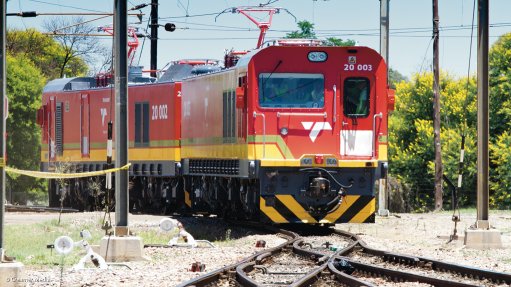Draft code targets 10% black pilots, 35% black bus ownership, more women in taxi industry
The Department of Trade and Industry has invited comment on the Draft Amended Transport Sector Code, which has been gazetted in terms of the Broad Based Black Economic Empowerment Act.
The transport sector code, one of the biggest sector codes, consists of eight subsector codes. It has been gazetted, by Minister of Trade and Industry Dr Rob Davies, for a 60-day public comment period.
The closing date for comment is June 8.
The eight subsector codes include aviation, bus commuter and coach services, forwarding and clearing, public sector transport, and the maritime, road freight, rail and taxi industries.
Davies says highlights of the Draft Amended Transport Sector Code include a requirement to achieve at least 10% black pilot representation and 30% black technician representation in the aviation industry.
“This is done to address the current limited representation of black people within pilots and technicians professions,” says Davies.
He adds that both the maritime and rail subsector codes introduce an indicator to measure representation of black youth in technical and/or professional positions in the maritime and rail industries.
“The target is at least 10%, which would increase the number of youth in technical and/or professional positions in the two industries.
“Furthermore, a target of 35% black ownership has been set by the bus commuter and coach services subsector code to increase the level of black ownership in [this] industry. The 35% black ownership target is higher than the 25% ownership target of the generic codes.”
The draft code also seeks to empower people living with disabilities in the rail industry, with the rail subsector code setting a target of 3% ownership for black people living with disabilities.
“In order to encourage broad participation, the rail sub-sector code has set an ownership target of 15% for the involvement of new black entrants,” adds Davies.
New black entrants are defined as black participants who have not held equity instruments in any other entities that have a total value of R50-million, he explains.
In the road-freight and logistics industry, the draft code acknowledged that increasing black ownership is a complex matter owing to the large number of different ownership structures prevalent in the road freight industry, with businesses ranging from large corporate organisations to small family businesses and even owner-driver operations.
However, the challenge is to “develop innovative mechanisms to increase black ownership.”
Male ‘Stranglehold’ in Taxi Industry
Already a largely black-owned business sector, the taxi subsector code has a number of different goals.
The draft code notes that government wants to develop a “national register of taxis to inform decision-making and coordinate planning” – a notoriously difficult task when considering the number of transport officials who had, in the past, lamented the large number of unregistered taxis on the road.
There is also a strong focus on labour rights, with the code stating a long-term vision of “ensuring that all workers in the taxi industry are afforded the same rights as other workers in South Africa”.
The code also wants to ensure the entry of women, youth and people living in rural areas at all levels of the industry, “so as to break the stranglehold on the industry by urban-based males”.
The target set for black women ownership is 25%.
The taxi code covers the minibus taxi industry, metered taxis, as well as Uber services.
Interested parties are requested to forward their comments on the draft code to transportsectorcode@thedti.gov.za.
To access the draft transport sector codes go to http://www.transport.gov.za/Portals/0/ITP/2016/docs/GovernmentGazetteNo39744_26Feb2016.pdf
![]()
Comments
Press Office
Announcements
What's On
Subscribe to improve your user experience...
Option 1 (equivalent of R125 a month):
Receive a weekly copy of Creamer Media's Engineering News & Mining Weekly magazine
(print copy for those in South Africa and e-magazine for those outside of South Africa)
Receive daily email newsletters
Access to full search results
Access archive of magazine back copies
Access to Projects in Progress
Access to ONE Research Report of your choice in PDF format
Option 2 (equivalent of R375 a month):
All benefits from Option 1
PLUS
Access to Creamer Media's Research Channel Africa for ALL Research Reports, in PDF format, on various industrial and mining sectors
including Electricity; Water; Energy Transition; Hydrogen; Roads, Rail and Ports; Coal; Gold; Platinum; Battery Metals; etc.
Already a subscriber?
Forgotten your password?
Receive weekly copy of Creamer Media's Engineering News & Mining Weekly magazine (print copy for those in South Africa and e-magazine for those outside of South Africa)
➕
Recieve daily email newsletters
➕
Access to full search results
➕
Access archive of magazine back copies
➕
Access to Projects in Progress
➕
Access to ONE Research Report of your choice in PDF format
RESEARCH CHANNEL AFRICA
R4500 (equivalent of R375 a month)
SUBSCRIBEAll benefits from Option 1
➕
Access to Creamer Media's Research Channel Africa for ALL Research Reports on various industrial and mining sectors, in PDF format, including on:
Electricity
➕
Water
➕
Energy Transition
➕
Hydrogen
➕
Roads, Rail and Ports
➕
Coal
➕
Gold
➕
Platinum
➕
Battery Metals
➕
etc.
Receive all benefits from Option 1 or Option 2 delivered to numerous people at your company
➕
Multiple User names and Passwords for simultaneous log-ins
➕
Intranet integration access to all in your organisation

















